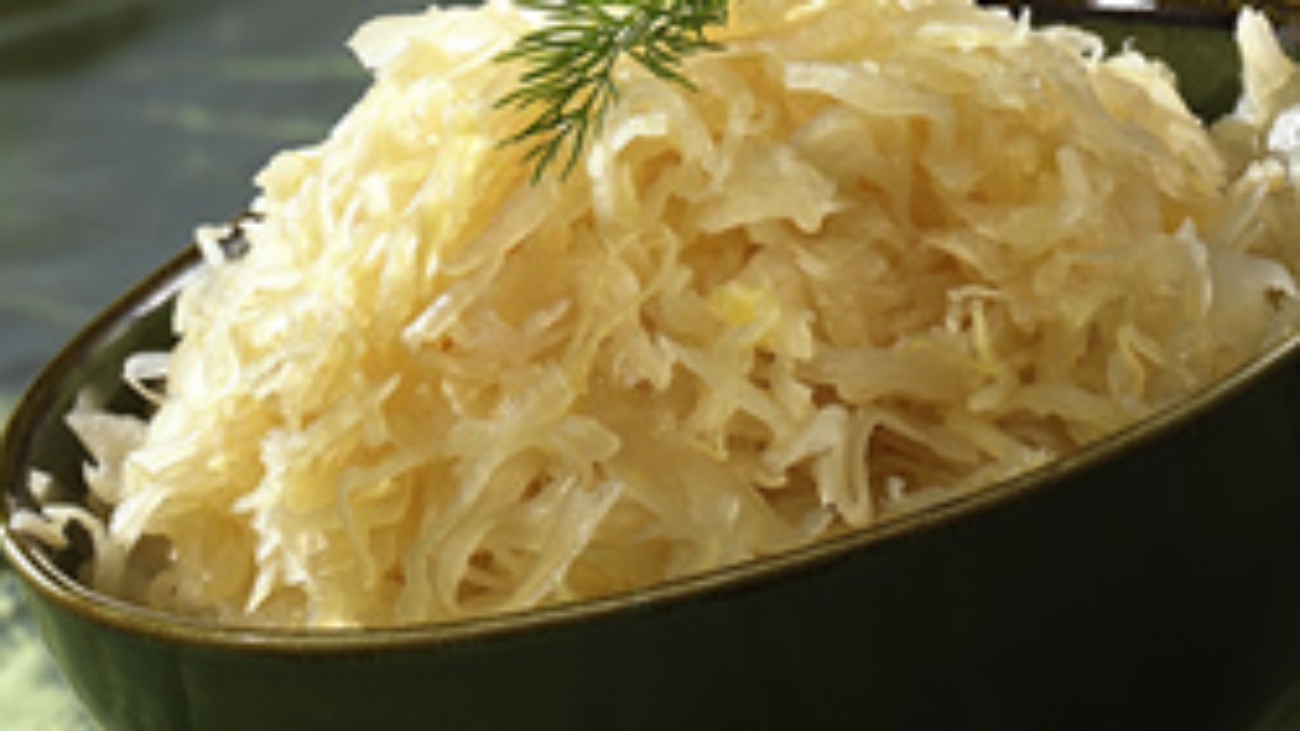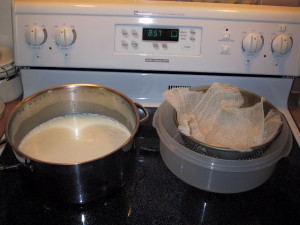1) Chop or Shred finely one to four heads of ORGANIC red and/or green cabbage;
2) Put the shredded cabbage in a crock or large bowl, and for every head of cabbage, add: 1 Tablespoon of NON-IODIZED Celtic or kosher salt; 1 teaspoon of caraway seeds; 4-to-6 dried juniper berries; and, 1 Tablespoon of whey.
3) Stomp or crush the cabbage for about 10 minutes per head of cabbage to produce nice cabbage juice; I use Lehman’s stomper but a good meat tenderizer or mallet works well too. It’s IMPORTANT to stomp especially if you use red cabbage. I like to stomp to music with a good beat; therefore, I stomp to Kaiti Garbi’s 2001-hit “To Kati”.
4) Cover your cabbage with a couple unshredded outer cabbage leaves, then press the cabbage and leaves down below the juice-level; next add stones to keep the cabbage below the juice level.
5) Cover your crock, or if using a Harsch crock put on the lid and add water to the water-seal.
NOTE: I let the sauerkraut ferment at room-temperature for two-to-three weeks. I check the sauerkraut after 2 weeks by tasting it (and making sure the pH is below 4.1), it will get more sour or acidic the longer it sits at room temperature. Once it has reached the taste I like, I put the sauerkraut in mason jars and refrigerate for up to one year.
Καλή Όρεξη
pronounced “kali oreksi” is Greek for Bon Appetit.


 Half gallon of yogurt in the pan on the left, after 14 hours in the 105°F oven. Cheese-cloth-lined collander in a drain bowl on the right. For Greek Yogurt I pour the yogurt into the collander set-up, and place in 105°F oven for one-to-two hours. I recently had my Greek yogurt assayed for Lactic Acid Bacteria by Warren Analytical Laboratory in Greeley, Colorado. They measured 60 million Colony Forming Units (CFU) per gram (times 28.35 grams/ounce = 1.7 Billion CFU/ounce!) A delicious source of probiotics for my family’s microbiome.
Half gallon of yogurt in the pan on the left, after 14 hours in the 105°F oven. Cheese-cloth-lined collander in a drain bowl on the right. For Greek Yogurt I pour the yogurt into the collander set-up, and place in 105°F oven for one-to-two hours. I recently had my Greek yogurt assayed for Lactic Acid Bacteria by Warren Analytical Laboratory in Greeley, Colorado. They measured 60 million Colony Forming Units (CFU) per gram (times 28.35 grams/ounce = 1.7 Billion CFU/ounce!) A delicious source of probiotics for my family’s microbiome.